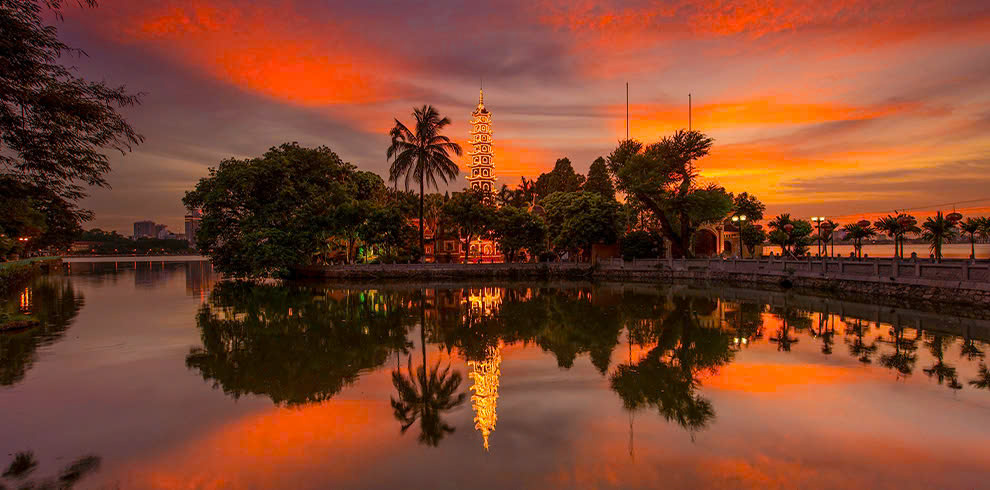Hanoi Capital: A Blend of History, Culture, and Modernity

Hanoi, the vibrant capital of Vietnam, is a city where centuries-old traditions coexist harmoniously with the energy of a rapidly developing metropolis. Nestled along the Red River, Hanoi offers a captivating mix of French colonial architecture, ancient temples, bustling markets, and a rich cultural heritage. Whether you’re a history buff, a foodie, or simply someone looking to experience the hustle and bustle of an Asian city, Hanoi provides an unforgettable journey.
1. Exploring the Old Quarter
The Old Quarter is the heart of Hanoi, where the city’s history, culture, and commerce have been intertwined for over a thousand years. Wander through the maze of narrow streets, each historically associated with a specific trade, such as silk, silver, or herbal medicine. The architecture here reflects the French colonial influence, with charming, weathered buildings adorned with colonial-era balconies.
Key highlights in the Old Quarter include:
- Hoan Kiem Lake: A serene green space in the city center, known for the iconic Turtle Tower and Ngoc Son Temple. It’s a popular spot for locals to gather, exercise, or relax.
- St. Joseph’s Cathedral: Built in the late 19th century, this neo-Gothic cathedral is a reminder of Hanoi’s French colonial past.
- Street food stalls: The Old Quarter is also a food lover’s paradise, where you can savor famous Vietnamese dishes like pho (noodle soup), banh mi (Vietnamese sandwich), bun cha (grilled pork with noodles), and egg coffee.
2. Historical and Cultural Landmarks
Hanoi is rich in cultural sites that provide insight into the nation’s history, from its ancient dynasties to the struggles during the French colonial era and the Vietnam War.
- The Ho Chi Minh Mausoleum: This monumental structure is the final resting place of Ho Chi Minh, the founding father of modern Vietnam. The mausoleum is a significant pilgrimage site, and visitors can observe a strict ceremonial procedure during visiting hours.
- Temple of Literature: One of the oldest universities in Southeast Asia, founded in 1070, this Confucian temple is dedicated to scholars and literature. The peaceful courtyards and traditional architecture make it a serene place to reflect on the city’s intellectual heritage.
- The Vietnam Museum of Ethnology: This museum is a must-visit for those interested in Vietnam’s diverse ethnic groups. Exhibits showcase the traditions, cultures, and lifestyles of the various ethnic communities in the country.
3. Water Puppetry
A unique cultural experience in Hanoi is watching a múa rối nước, or water puppet show. This traditional Vietnamese art form dates back to the 11th century and was originally performed in rural villages during the rice harvest season. The shows take place in a waist-deep pool, with wooden puppets controlled by hidden rods. The performances often feature folk tales, legends, and daily life scenes, accompanied by live music and singing.
You can catch water puppet performances at the Thang Long Water Puppet Theatre, a popular venue near Hoan Kiem Lake.
4. Vibrant Markets
Hanoi’s markets are a sensory overload, brimming with sights, sounds, and smells. The city is home to numerous markets where you can shop for local handicrafts, textiles, fresh produce, and street food.
- Dong Xuan Market: Hanoi’s largest indoor market, where you’ll find everything from clothing and electronics to local snacks and souvenirs.
- Weekend Night Market: Held every Friday, Saturday, and Sunday, the night market in the Old Quarter is a fantastic place to explore local crafts, clothing, and street food while soaking in the lively atmosphere.
5. Culinary Delights
No trip to Hanoi would be complete without indulging in its culinary offerings. The city’s street food scene is world-famous, and you’ll find food vendors lining the streets, cooking up delicious and affordable dishes. A few must-try dishes include:
- Pho: Hanoi is the birthplace of pho, and the bowl of steaming noodle soup here is less rich than in southern Vietnam, with a delicate and fragrant broth that is the soul of the dish.
- Bánh Cuốn: A delicate rice noodle roll filled with minced pork and mushrooms, topped with crispy fried onions and served with dipping sauce.
- Cha Ca: Grilled fish, often served with noodles and fresh herbs, is a Hanoi specialty.
- Egg Coffee: A uniquely Hanoi drink, egg coffee combines whipped egg yolks, sugar, sweetened condensed milk, and strong Vietnamese coffee, creating a creamy, rich, and decadent beverage.
6. Hanoi’s Lakes and Green Spaces
Hanoi is also home to many tranquil lakes and parks that offer a peaceful escape from the city’s hustle and bustle.
- Hoan Kiem Lake: This iconic lake in the center of Hanoi is surrounded by historic landmarks and is the perfect place for a morning stroll or evening relaxation. The legend of the lake tells the tale of the magic sword returned to a turtle by King Le Loi.
- West Lake (Ho Tay): The largest lake in Hanoi, West Lake offers beautiful views, temples, and plenty of restaurants and cafes along its shores. It’s an ideal spot for a leisurely bike ride or a boat ride.
- Thien Quang Lake: A smaller, more serene lake located near Hanoi’s railway station. It’s a quiet spot to enjoy a walk or sit by the water.
7. Day Trips from Hanoi
While Hanoi itself is packed with things to see and do, the surrounding areas also offer some great day-trip options.
- Ha Long Bay: A UNESCO World Heritage site, Ha Long Bay is famous for its emerald waters and limestone karsts. A day trip or an overnight cruise in Ha Long Bay is a popular escape from the city.
- Perfume Pagoda: Located about 60 kilometers from Hanoi, the Perfume Pagoda is a complex of Buddhist temples and shrines set in the mountains. Visitors can take a boat ride along a scenic river and hike up to the pagoda for panoramic views.
- Ninh Binh: Often referred to as “Halong Bay on land,” Ninh Binh features stunning karst landscapes, rice paddies, and ancient temples. A boat ride through the Tam Coc caves is one of the highlights.
8. Getting Around Hanoi
Hanoi is a city that thrives on its energy, and getting around can be an adventure in itself. You’ll see scooters zipping through the streets, creating a lively and chaotic atmosphere. Here are some common ways to get around:
- Walking: The Old Quarter is best explored on foot, allowing you to discover hidden gems and stop at local eateries.
- Cyclo: A traditional three-wheeled bicycle taxi can be a fun way to explore the Old Quarter and take in the sights at a slower pace.
- Motorbike Taxis: Motorbike taxis, or xe om, are common for short trips around the city, and they offer a fast, if thrilling, way to get around.
- Public Buses and Taxis: Hanoi has a fairly efficient public bus system, though taxis and ride-hailing apps like Grab are often more convenient for visitors.
Conclusion
Hanoi is a city that never stops surprising. It’s a place where you can dive deep into the past, embrace the present, and even venture into the future. With its combination of history, culture, cuisine, and energy, it’s a city that will leave a lasting impression on anyone who visits. Whether you’re wandering through ancient streets, savoring the street food, or exploring its many temples, Hanoi offers an experience like no other.
